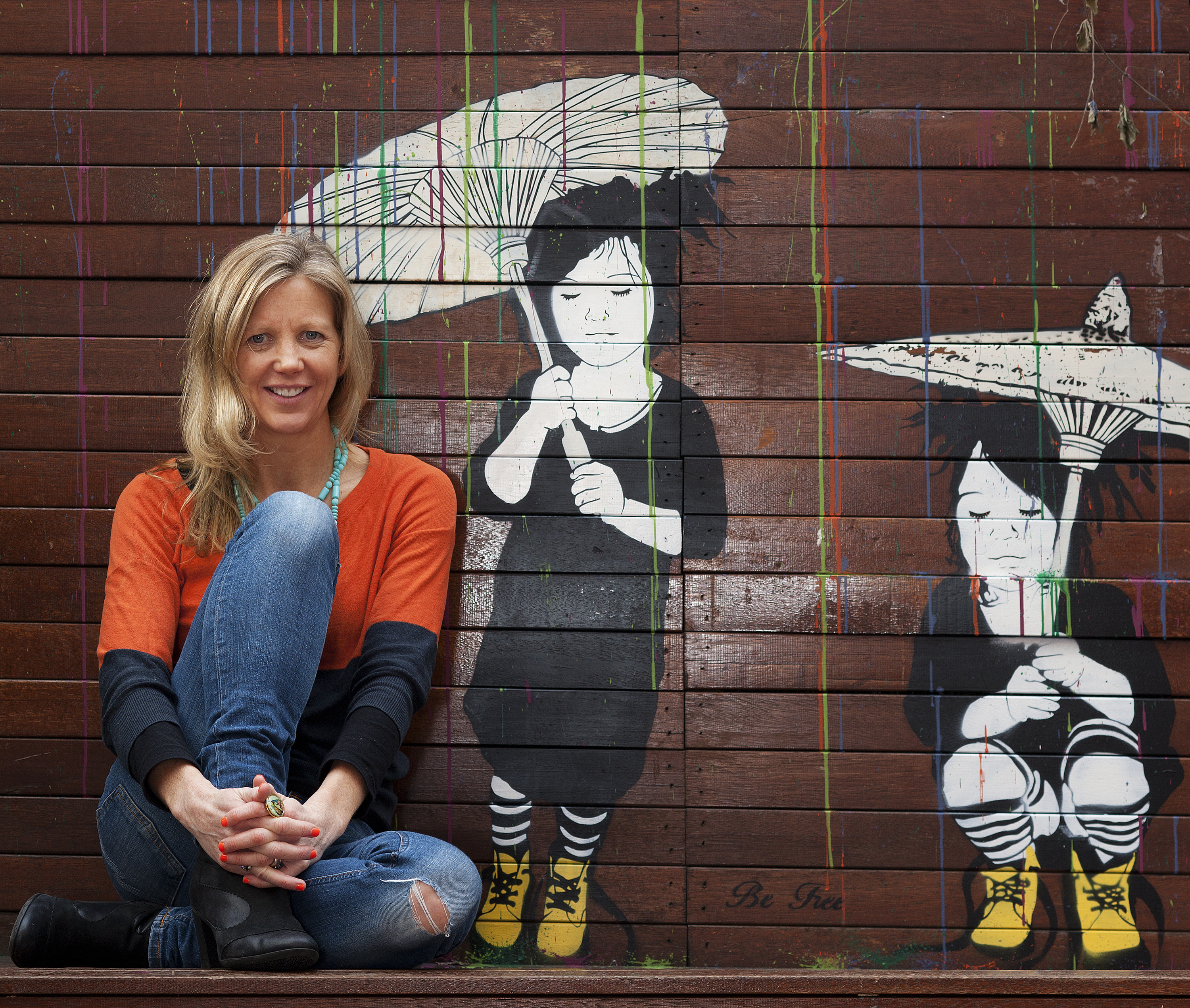In Melbourne, the business of street art


MELBOURNE –- From murals, stencils and installations, to paste-ups and poster art -– street art has helped to shape the cultural personality of Melbourne. Socially it reinvigorates areas, providing warmth, personality, colour, and texture transforming spaces into places worth seeking out.
Increasingly, businesses, developers and architects are beginning to see its value too.
“Architects are, at their core, design oriented and looking to be innovative. Street art falls neatly across this, and can transform the design aesthetic,” Romy Paltoglou, director of Alleycat Creative, says.
Since 2010 Paltoglou's boutique consultancy has been filling a gap between a cadre of designers, developers, business owners, private clients and underground street artists.
She believes there’s great interest in the commercial sector, along with an emerging need for sourcing contemporary creative solutions for both public and private spaces.
According to the Melburnian, Alleycat Creative is the first of its kind.
“There are certainly different studios and artistic collectives operating in various cities both at a gallery and street level, but none that I know of offering the client an end-to-end creative solution for their spaces,” she explains.
The idea came to her in 2009 as she was walking through a very new development in Melbourne's inner-south. Finding the space visually very cold, angular and soulless, Paltoglou contemplated what she could do to soften it.
As a follower of Melbourne’s street art scene, she wondered whether commissioned street art pieces could integrate with architectural design, and if could she build a business bringing these two seemingly disparate worlds together.
In researching the concept, Paltoglou learned that many businesses found it very hard (and time consuming) to find underground artists, communicate with them and ultimately work together on a live project.
Secondly, the artists found it difficult to determine the right entry point with these groups, how to approach them, and how to present themselves creatively in a business sense.
Paltoglou identified that a conduit was needed to work with businesses, developers and architect, in order to appreciate their needs and vision for any given project, and then translate this into a brief for the artists.
Hence, Alleycat Creative was established.
“It is a unique business model because it focuses on the needs of the artists and is oriented towards developing their brand and profile with the marketplace," Paltoglou says.
To date, Alleycat Creative has worked with over 20 artists installing over 30 art pieces in both private and commercial spaces.
She attributes much of her success to her personal relationships with both parties, which she regards as core to her business.
“By getting to know the artists in this way, and in particular their personalities and their creative aspirations, I am able to protect and enhance their transition from street to commission work by introducing them to customers and markets that have previously been very difficult to access,” she says.
Paltoglou's considered approach has hit home with Be Free, a prolific Melbourne street artist working with Alleycat Creative.
“I guess it just felt right, I liked the idea that they were looking for artists to suit an environment and didn’t want to compromise the artists' style,” Be Free says.
Conversely, Paltoglou selects artists whose works she thinks will translate best to her clients and their audiences.
“If I have a client who requires a particular style not already represented by an artist within the group I will find the artist to match,’ she says.
For artists Mark Fitz and Haha, working with Alleycat Creative gives them additional exposure and enables them to earn a living doing what they love best.
“I like doing commercial work because it means I'm getting paid for doing what I love,” Mark Fitz says. “I'll never compromise artistically for money and I don't see commercial work as 'selling-out' but rather 'buying-in' to the art industry.”
Street artist HaHa shares this sentiment. “It’s all about getting your artwork out there, so I see it as another medium of exposure,” he says.
Justin Northrop, an Alleycat Creative architect client, sees the benefits of involving street artists in new commissions.
“The graphic and narrative qualities of street art and its human scale will captivate a viewer and encourage them to think about the work and its context in a way that a new built environment alone usually cannot do,” Northrop says.
Andy Mullins, who owns several pubs, is also an advocate for the incorporation of street art into public spaces. He has integrated street art in several of his businesses including the drinking den Holliava.
“The single greatest advancement we have seen in enhancing public spaces over the past three years has been the gradual handing over of a public spaces to urban artists as they deliver a sense of soul, spirit and almost reincarnation to what is otherwise simply a timber, steel or concrete form,” Mullins says.
Paltoglou shares Mullins’ respect for Melbourne’s street art community. She hopes that with the Alleycat Creative model, she can assist in reducing some of the prejudices often associated with street art.
“Through increased exposure of this diverse and talented creative collective I am hoping the acceptance and respect by the public for this form of expression increases and artists are acknowledged for the generous gifts they bestow to our cities,” she says.
Besides the art versus vandalism debate, she believes a secondary misconception about street art is that because it’s been created free for public consumption, it’s a less legitimate form of artistic expression.
“I think we're at a turning point now. There's definitely a better understanding and appreciation of street-art as a legitimate art form,” Fitz says.
Northrop believes there's great potential for street art -- in both the business and creative sense.
"The growing general acceptance of street art as a legitimate art form will lead to an increased variety of applications," he says.
To date the most obvious locations for commissions have been external surfaces within inner urban developments. It's likely that in future, fans of street art will increasingly opt to commission works for their homes and workplaces.
Photos: Courtesy of Alleycat Creative.
This post was originally published on Smartplanet.com